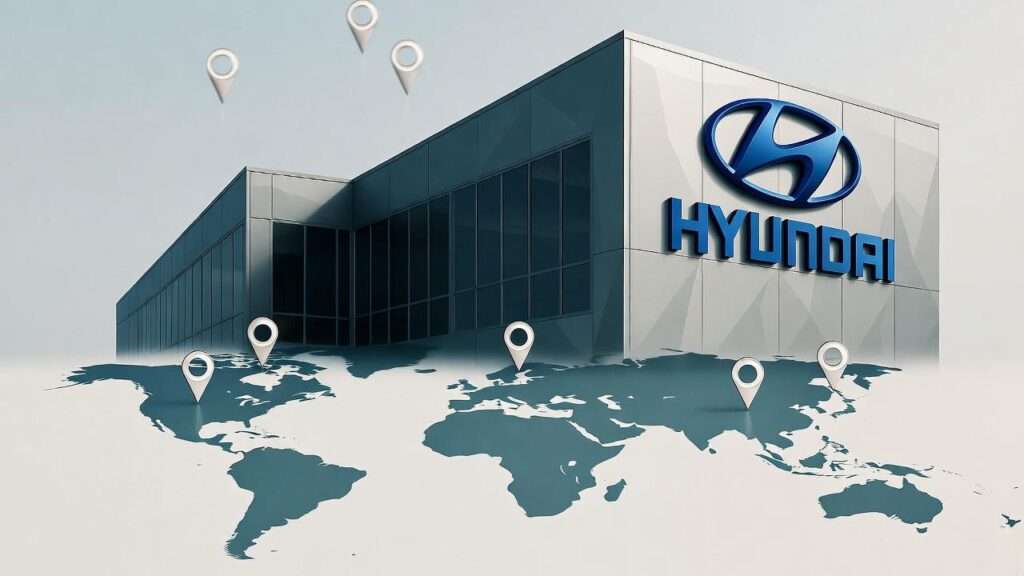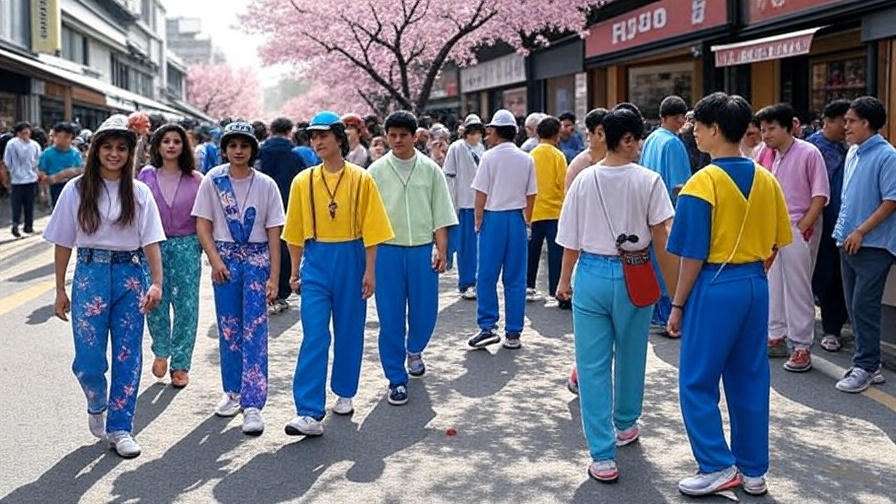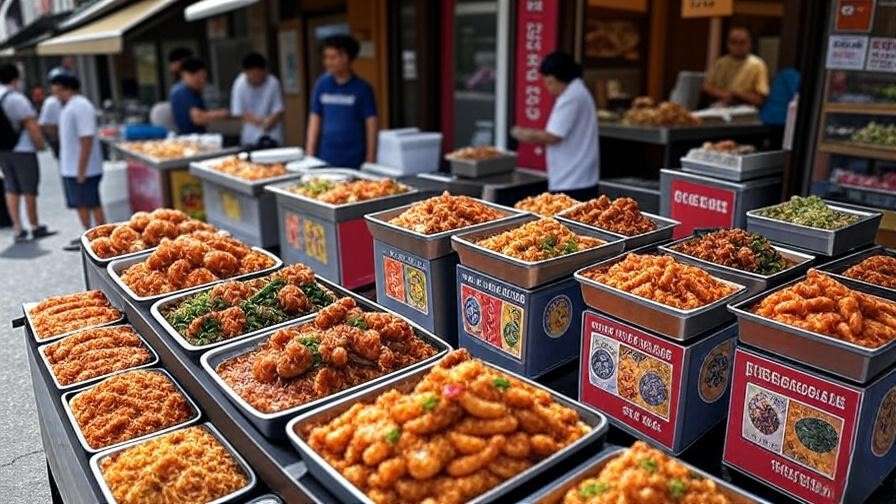Ever wondered where the sleek Hyundai car in your driveway was born? From the bustling factories of South Korea to high-tech plants across the globe, the question “where is Hyundai cars made” unveils a fascinating story of innovation, cultural pride, and global ambition. Hyundai, a cornerstone of South Korea’s industrial legacy, has grown from a local automaker to a worldwide leader, producing millions of vehicles annually. For fans of Korean culture, car enthusiasts, or curious owners, understanding Hyundai’s manufacturing journey offers a window into the blend of tradition and cutting-edge technology that defines the brand. In this article, we’ll trace Hyundai’s roots in South Korea, explore its global production network, and reveal how its Korean heritage shapes every vehicle, no matter where it’s made.
As a brand synonymous with quality and innovation, Hyundai’s story is deeply tied to South Korea’s rapid modernization. This article draws on insights from Hyundai’s official reports, industry analyses, and my expertise in Korean culture and automotive history to provide a comprehensive look at where Hyundai cars are made. Whether you’re intrigued by Korea’s industrial prowess or wondering about the origins of your own Hyundai, this guide will answer your questions and celebrate the cultural significance behind the brand.
The Korean Heart of Hyundai: A Legacy of Innovation
Hyundai’s Origins in South Korea
 Hyundai Motor Company, founded in 1967, emerged during South Korea’s transformative “Miracle on the Han River,” a period of rapid industrialization that turned the nation into an economic powerhouse. Headquartered in Seoul, Hyundai began as a modest automaker, producing vehicles under license from foreign brands like Ford. By 1976, it launched the Pony, South Korea’s first independently designed car, marking a turning point for the company and the nation’s automotive industry. Today, Hyundai’s largest manufacturing hub is in Ulsan, South Korea, a coastal city home to the world’s largest single automotive plant. Spanning over 1,200 acres, the Ulsan facility produces over 1.6 million vehicles annually, including popular models like the Sonata and Elantra.
Hyundai Motor Company, founded in 1967, emerged during South Korea’s transformative “Miracle on the Han River,” a period of rapid industrialization that turned the nation into an economic powerhouse. Headquartered in Seoul, Hyundai began as a modest automaker, producing vehicles under license from foreign brands like Ford. By 1976, it launched the Pony, South Korea’s first independently designed car, marking a turning point for the company and the nation’s automotive industry. Today, Hyundai’s largest manufacturing hub is in Ulsan, South Korea, a coastal city home to the world’s largest single automotive plant. Spanning over 1,200 acres, the Ulsan facility produces over 1.6 million vehicles annually, including popular models like the Sonata and Elantra.
The Ulsan plant is more than a factory; it’s a symbol of Korean ingenuity. With five independent production facilities, a dedicated port for exporting vehicles, and a workforce of over 34,000, it’s a marvel of efficiency. According to Hyundai’s 2024 sustainability report, Ulsan accounts for nearly 40% of the company’s global production, underscoring South Korea’s central role in Hyundai’s operations.
Why Korea Matters to Hyundai’s Identity
Hyundai’s identity is deeply rooted in Korean values like diligence, precision, and innovation. These principles, often celebrated in Korean culture, are evident in Hyundai’s meticulous manufacturing processes and commitment to quality. The Korean concept of jeong—a sense of deep connection and loyalty—extends to how Hyundai views its customers and employees, fostering a brand trusted worldwide. For fans of Korean culture, Hyundai’s rise parallels the global popularity of K-pop and K-dramas, showcasing South Korea’s ability to blend tradition with modernity.
As Dr. Kim Soo-hyun, an automotive industry analyst at Seoul National University, notes, “Hyundai’s success is a reflection of Korea’s disciplined work ethic and relentless pursuit of excellence. The ‘Made in Korea’ label carries a promise of quality that resonates globally.” This cultural pride is evident in every Hyundai vehicle, whether assembled in Ulsan or abroad.
Where Are Hyundai Cars Made? A Global Manufacturing Network
South Korea: The Core of Hyundai’s Production
While Hyundai has expanded globally, South Korea remains the heart of its manufacturing. The Ulsan plant, operational since 1968, produces a wide range of vehicles, from compact cars to luxury sedans under Hyundai’s Genesis brand. Other key Korean facilities include the Asan plant, which focuses on mid-size vehicles like the Sonata, and the Jeonju plant, dedicated to commercial vehicles like buses and trucks. Together, these plants produce over 2 million vehicles annually, making South Korea the backbone of Hyundai’s global supply.
Hyundai’s Korean factories are known for their advanced technology and stringent quality control. The Ulsan plant, for example, uses over 500 robots for welding and assembly, ensuring precision and consistency. According to a 2023 report by Automotive News, Hyundai’s Korean plants consistently rank among the world’s most efficient, with Ulsan producing a vehicle every 12 seconds.
Hyundai’s Global Factories: Beyond Korea
 To meet global demand and reduce costs, Hyundai has established manufacturing plants worldwide. Here’s a look at key locations:
To meet global demand and reduce costs, Hyundai has established manufacturing plants worldwide. Here’s a look at key locations:
- United States: The Montgomery, Alabama, plant, operational since 2005, produces models like the Santa Fe, Tucson, and Elantra. With an annual capacity of 400,000 vehicles, it serves the North American market and employs over 7,000 workers.
- China: Hyundai operates multiple plants, including in Beijing and Chongqing, producing models tailored for Asia, such as the Verna and Encino. These facilities cater to China’s massive automotive market.
- India: The Chennai plant, established in 1996, is a hub for compact cars like the Creta and Venue, with an annual output of over 700,000 vehicles. India is a key market for Hyundai’s affordable models.
- Europe: Plants in the Czech Republic (Nošovice) and Turkey (İzmit) produce vehicles like the i30 and Tucson for European consumers, emphasizing fuel efficiency and compact designs.
- Other Regions: Hyundai has factories in Brazil (Piracicaba), Mexico (Tijuana), Indonesia (Cikarang), and Russia (St. Petersburg), each adapting to regional needs and trade policies.
Hyundai’s global expansion began in the 1990s to reduce shipping costs and comply with trade regulations. By producing vehicles closer to key markets, Hyundai ensures affordability and customization, such as diesel engines for Europe or SUVs for the U.S.
How Location Impacts Hyundai’s Cars
Does the manufacturing location affect a Hyundai car’s quality? Hyundai maintains strict global standards, ensuring consistency across all plants. For example, the Alabama plant uses the same quality control protocols as Ulsan, with rigorous testing for safety and performance. However, regional factories adapt vehicles to local preferences. In India, Hyundai emphasizes fuel-efficient compact cars, while in the U.S., it focuses on spacious SUVs like the Palisade.
A 2024 J.D. Power study ranked Hyundai among the top brands for reliability, regardless of manufacturing origin. This consistency stems from Hyundai’s centralized R&D in Namyang, South Korea, where designs and technologies are standardized before being implemented globally.
The Manufacturing Process: How Hyundai Cars Are Made
From Design to Assembly: A Peek Inside Hyundai’s Factories
Hyundai’s manufacturing process begins at its Namyang R&D Center in South Korea, where engineers design vehicles with input from global teams. The process includes:
- Design and Prototyping: Engineers create digital models and physical prototypes, tested for aerodynamics and safety.
- Material Sourcing: Hyundai’s vertical integration, including its own steel production through Hyundai Steel, ensures high-quality materials.
- Assembly: Robots and skilled workers assemble vehicles, with Ulsan’s automated lines handling tasks like welding and painting.
- Quality Control: Every vehicle undergoes rigorous testing, including crash simulations and road tests, to meet global safety standards.
The Ulsan plant’s automation is a standout, with over 90% of welding done by robots, reducing human error. Yet, skilled technicians oversee critical stages, blending technology with craftsmanship.
Sustainability and Innovation in Production
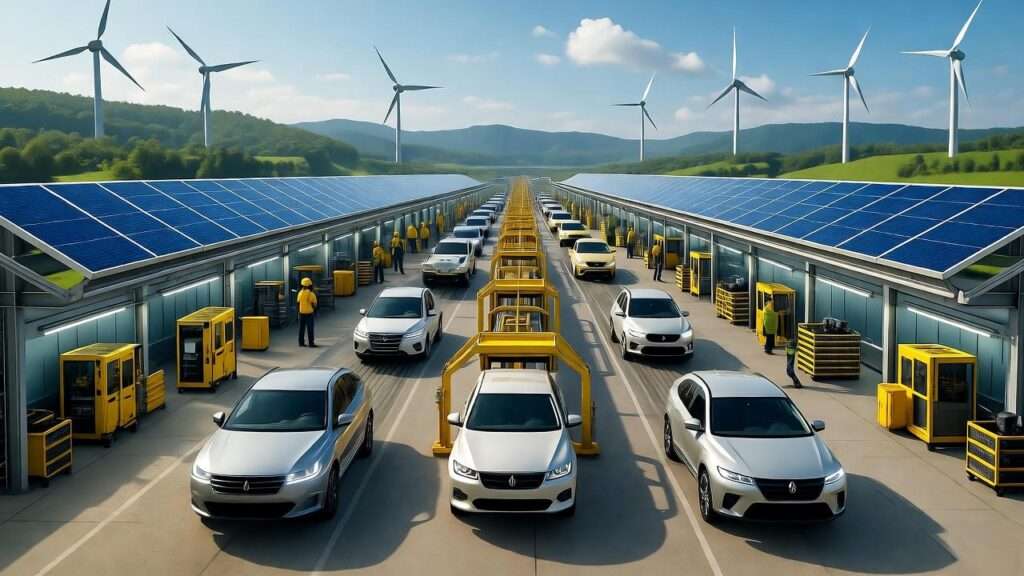 Hyundai is a leader in sustainable manufacturing. Its Ulsan plant has reduced carbon emissions by 15% since 2015, according to its 2024 sustainability report. The company is investing heavily in electric vehicle (EV) production, with models like the Ioniq 5 and Ioniq 6 manufactured in Korea and Singapore. Hyundai also uses recycled materials in interiors and aims for carbon neutrality by 2045.
Hyundai is a leader in sustainable manufacturing. Its Ulsan plant has reduced carbon emissions by 15% since 2015, according to its 2024 sustainability report. The company is investing heavily in electric vehicle (EV) production, with models like the Ioniq 5 and Ioniq 6 manufactured in Korea and Singapore. Hyundai also uses recycled materials in interiors and aims for carbon neutrality by 2045.
In 2023, Hyundai received the EcoVadis Gold Medal for sustainability, recognizing its efforts in reducing waste and energy use. These initiatives resonate with environmentally conscious consumers and align with global trends.
Expert Tip: Hyundai’s vertical integration allows it to control costs and quality. For example, producing its own steel reduces reliance on external suppliers, ensuring consistency and affordability.
Hyundai and Korean Culture: A Symbiotic Relationship
Hyundai as a Cultural Ambassador
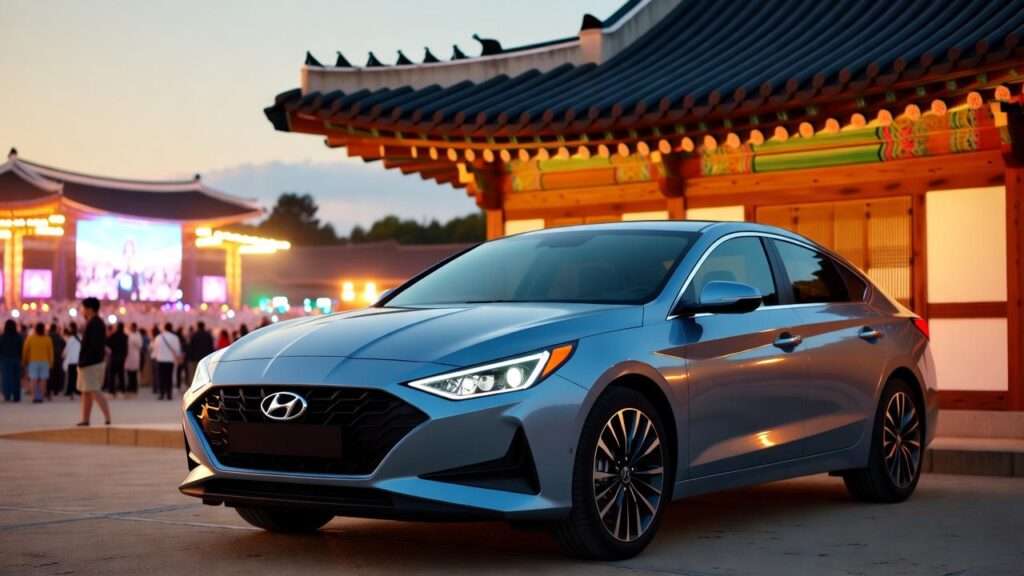 Hyundai’s global success mirrors the rise of Korean culture, often called the “Hallyu” or Korean Wave, which includes K-pop, K-dramas, and cuisine. Just as BTS and Squid Game have put South Korea on the global stage, Hyundai’s vehicles carry the nation’s reputation for innovation and quality. The company’s sponsorships, such as the FIFA World Cup and KCON (a global K-pop festival), further amplify Korean culture. For instance, Hyundai’s partnership with KCON showcases its vehicles alongside performances by groups like BTS or BLACKPINK, blending automotive excellence with cultural pride.
Hyundai’s global success mirrors the rise of Korean culture, often called the “Hallyu” or Korean Wave, which includes K-pop, K-dramas, and cuisine. Just as BTS and Squid Game have put South Korea on the global stage, Hyundai’s vehicles carry the nation’s reputation for innovation and quality. The company’s sponsorships, such as the FIFA World Cup and KCON (a global K-pop festival), further amplify Korean culture. For instance, Hyundai’s partnership with KCON showcases its vehicles alongside performances by groups like BTS or BLACKPINK, blending automotive excellence with cultural pride.
For readers fascinated by Korean culture, Hyundai represents more than cars—it’s a symbol of South Korea’s global influence. The brand’s sleek designs and cutting-edge technology reflect the same creativity and precision seen in Korean entertainment. Visiting a Hyundai showroom or driving an Ioniq 5 feels like experiencing a piece of Korea’s modern legacy, whether you’re in Seoul or San Francisco.
How Korean Work Ethic Shapes Hyundai’s Success
The Korean concept of ppalli ppalli—meaning “hurry, hurry”—drives Hyundai’s fast-paced innovation. This cultural ethos, rooted in South Korea’s post-war push for rapid development, is evident in Hyundai’s ability to bring new models to market quickly. For example, the Ioniq 5, launched in 2021, went from concept to production in under three years, a testament to Hyundai’s agility.
This work ethic also resonates in Korean dramas, where characters often overcome challenges through determination and speed—think of the ambitious protagonists in shows like Start-Up or Itaewon Class. Hyundai’s engineers embody this spirit, working tirelessly to refine technologies like hydrogen fuel cells and autonomous driving. A story from Hyundai’s Ulsan plant illustrates this: Engineer Park Ji-hoon, featured in a 2023 Hyundai documentary, described working late nights to perfect the Palisade’s suspension, ensuring it met global standards. His dedication reflects Korea’s cultural emphasis on excellence and perseverance.
Example: For fans of K-dramas, Hyundai’s story is like a real-life drama of grit and triumph. Just as a drama hero rises from humble beginnings, Hyundai transformed from a small Korean firm to a global giant, carrying Korea’s cultural values along the way.
Why Does It Matter Where Hyundai Cars Are Made?
Quality and Reliability Across Borders
A common question among Hyundai owners is whether a car made in Korea differs in quality from one made in the U.S., India, or elsewhere. The answer lies in Hyundai’s rigorous global standards. Every plant, from Ulsan to Alabama, adheres to the same quality protocols developed at the Namyang R&D Center. These include standardized assembly processes, safety tests, and performance benchmarks. For instance, a Tucson built in the Czech Republic undergoes the same 100-point inspection as one from Ulsan, ensuring consistency.
Hyundai’s reliability is backed by data: in the 2024 J.D. Power Vehicle Dependability Study, Hyundai ranked among the top five brands, with models like the Elantra and Santa Fe earning high marks regardless of production location. This consistency reassures buyers that a Hyundai’s quality remains uncompromised, whether it’s made in South Korea or abroad.
Practical Tip: To find out where your Hyundai was made, check the Vehicle Identification Number (VIN). The first character indicates the country of origin: “K” for Korea, “1” or “5” for the U.S., “M” for India, and so on. This can satisfy curiosity and provide insight into your car’s journey.
Economic and Cultural Impact
Hyundai’s factories have a profound impact on local economies and global perceptions of Korean culture. In Alabama, the Montgomery plant employs over 7,000 workers and supports thousands more through supply chains, contributing over $1.7 billion annually to the local economy, according to a 2023 economic impact study. In India, the Chennai plant has created over 10,000 direct jobs and spurred growth in automotive suppliers, making Hyundai the country’s second-largest carmaker.
Culturally, Hyundai reinforces South Korea’s image as a hub of innovation. The “Made in Korea” label on vehicles like the Genesis G80 carries the same prestige as Samsung electronics or LG appliances, enhancing Korea’s global reputation. For Koreans, Hyundai is a source of national pride, much like the success of K-pop stars or Olympic athletes. This cultural resonance makes Hyundai’s manufacturing story compelling for readers interested in Korea’s global influence.
FAQ Section:
- Q: Are Hyundai cars made in Korea better than those made elsewhere?
A: No, Hyundai’s global standards ensure consistent quality across all plants. A Sonata from Alabama is built to the same specifications as one from Asan, Korea, backed by rigorous testing and certifications. - Q: How can I tell where my Hyundai was made?
A: Check the first character of your car’s VIN. For example, “K” indicates South Korea, “1” or “5” the U.S., and “M” India. Your dealer can also provide this information. - Q: Does Hyundai’s global production affect its Korean identity?
A: While Hyundai produces cars worldwide, its Korean heritage remains central. Designs, R&D, and core values originate in South Korea, ensuring the brand retains its cultural identity.
Hyundai’s Future: Where Will Cars Be Made Next?
Expanding EV and Autonomous Vehicle Production
 Hyundai is positioning itself as a leader in the future of mobility, with significant investments in electric vehicles (EVs) and autonomous driving. In 2023, Hyundai opened a dedicated EV plant in Singapore, producing models like the Ioniq 5, with plans to expand capacity to 30,000 vehicles annually by 2026. In the U.S., a new $7.6 billion factory in Georgia, set to open in 2025, will focus on EVs and batteries, aiming to produce 300,000 vehicles per year. These facilities reflect Hyundai’s commitment to sustainable transportation and meeting global demand for EVs.
Hyundai is positioning itself as a leader in the future of mobility, with significant investments in electric vehicles (EVs) and autonomous driving. In 2023, Hyundai opened a dedicated EV plant in Singapore, producing models like the Ioniq 5, with plans to expand capacity to 30,000 vehicles annually by 2026. In the U.S., a new $7.6 billion factory in Georgia, set to open in 2025, will focus on EVs and batteries, aiming to produce 300,000 vehicles per year. These facilities reflect Hyundai’s commitment to sustainable transportation and meeting global demand for EVs.
Hyundai is also advancing hydrogen fuel cell technology, with its Nexo SUV leading the market. The company’s Asan plant in Korea is expanding hydrogen production, while partnerships with European firms aim to build hydrogen infrastructure. Autonomous driving is another frontier, with Hyundai testing Level 4 self-driving technology in Seoul and planning to integrate it into future models.
Expert Insight: “Hyundai’s investment in EVs and hydrogen positions it as a forward-thinking leader,” says Dr. Lee Min-jae, an automotive analyst at Korea University. “Its new factories are strategically placed to meet global demand while advancing sustainable innovation.”
Adapting to Global Trends
Hyundai’s global manufacturing strategy adapts to evolving trends like supply chain disruptions and trade policies. For example, the Georgia plant reduces reliance on Asian supply chains, ensuring stability amid geopolitical tensions. Hyundai is also exploring new markets, such as Africa and Southeast Asia, with plans for a factory in Nigeria to serve the growing African market. These moves align with Hyundai’s goal to produce 3.6 million vehicles annually by 2030, with 50% being EVs or hydrogen-powered.
By balancing local production with global standards, Hyundai navigates challenges like semiconductor shortages and tariff changes. Its flexibility ensures it remains competitive while maintaining the quality that defines the brand.
From the sprawling Ulsan plant in South Korea to high-tech factories in the U.S., India, and beyond, where Hyundai cars are made tells a story of innovation, cultural pride, and global ambition. South Korea remains the heart of Hyundai’s operations, infusing every vehicle with the nation’s values of precision and excellence. Yet, its global network ensures accessibility and customization for drivers worldwide. For fans of Korean culture, Hyundai’s journey reflects the same dynamic spirit seen in K-dramas and K-pop, making it a true ambassador of the Korean Wave.
Whether you’re a Hyundai owner curious about your car’s origins or a culture enthusiast exploring Korea’s industrial legacy, this journey through Hyundai’s manufacturing world offers valuable insights. Check your car’s VIN to discover its birthplace, visit a Korean cultural event to feel the pride behind the brand, or share your favorite Hyundai model in the comments below. From South Korea to the world, where Hyundai cars are made is a testament to quality, innovation, and cultural heritage.

